Sustainable Farnham house unites contemporary architecture and nature
A sustainable Farnham house in the Surrey countryside combines a secluded, sloping site with modern materials
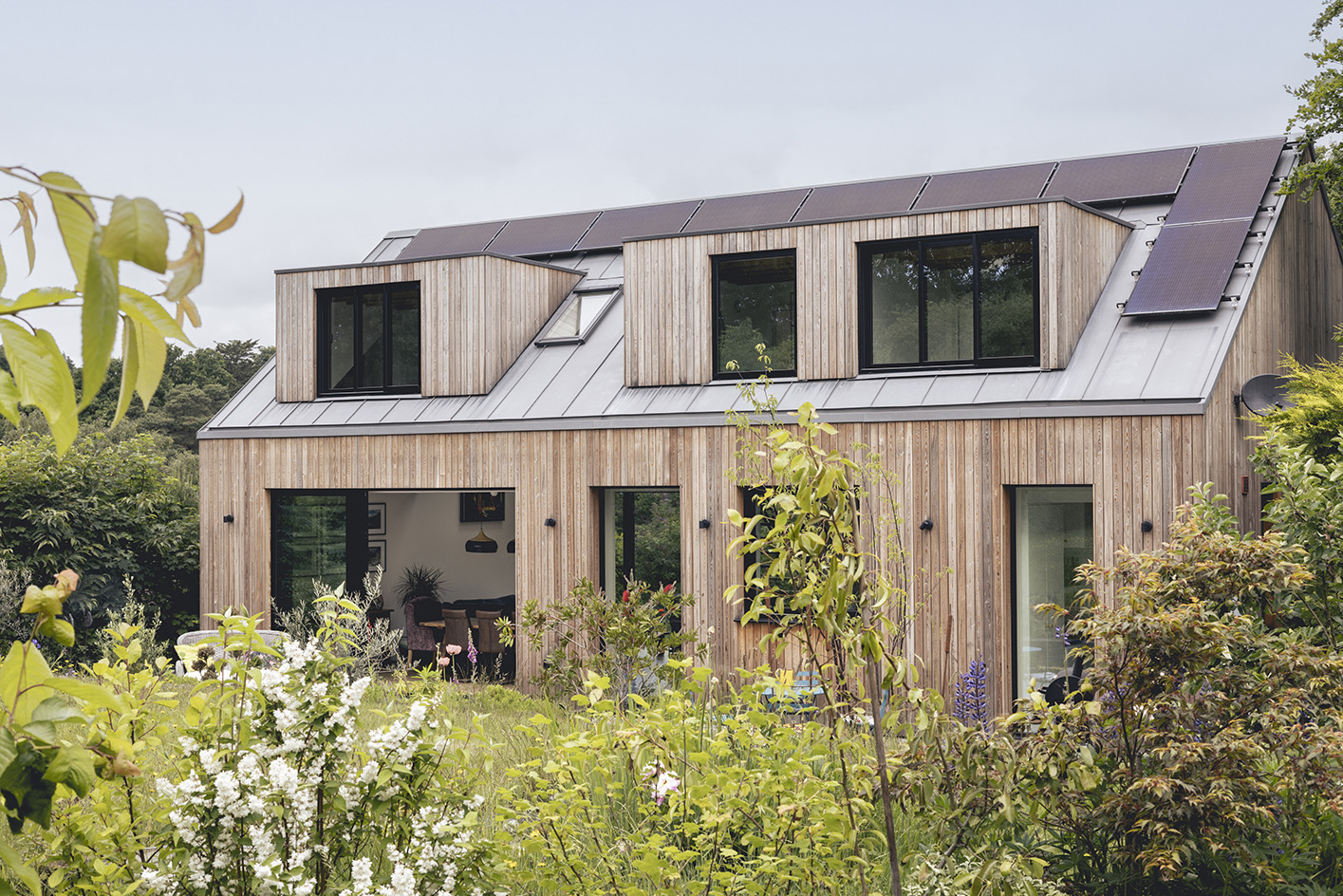
This sustainable Farnham house sprang from its owners' fabric-first decision. Instead of updating a dilapidated bungalow on site, it made more sense for the clients and their architects to demolish the modest property and replace it with a new, eco-friendly, modern building. The aim was to design and construct a home that would make the most of the secluded setting and enable the owners to integrate renewable technology to run it efficiently and with minimum impact to its surroundings.
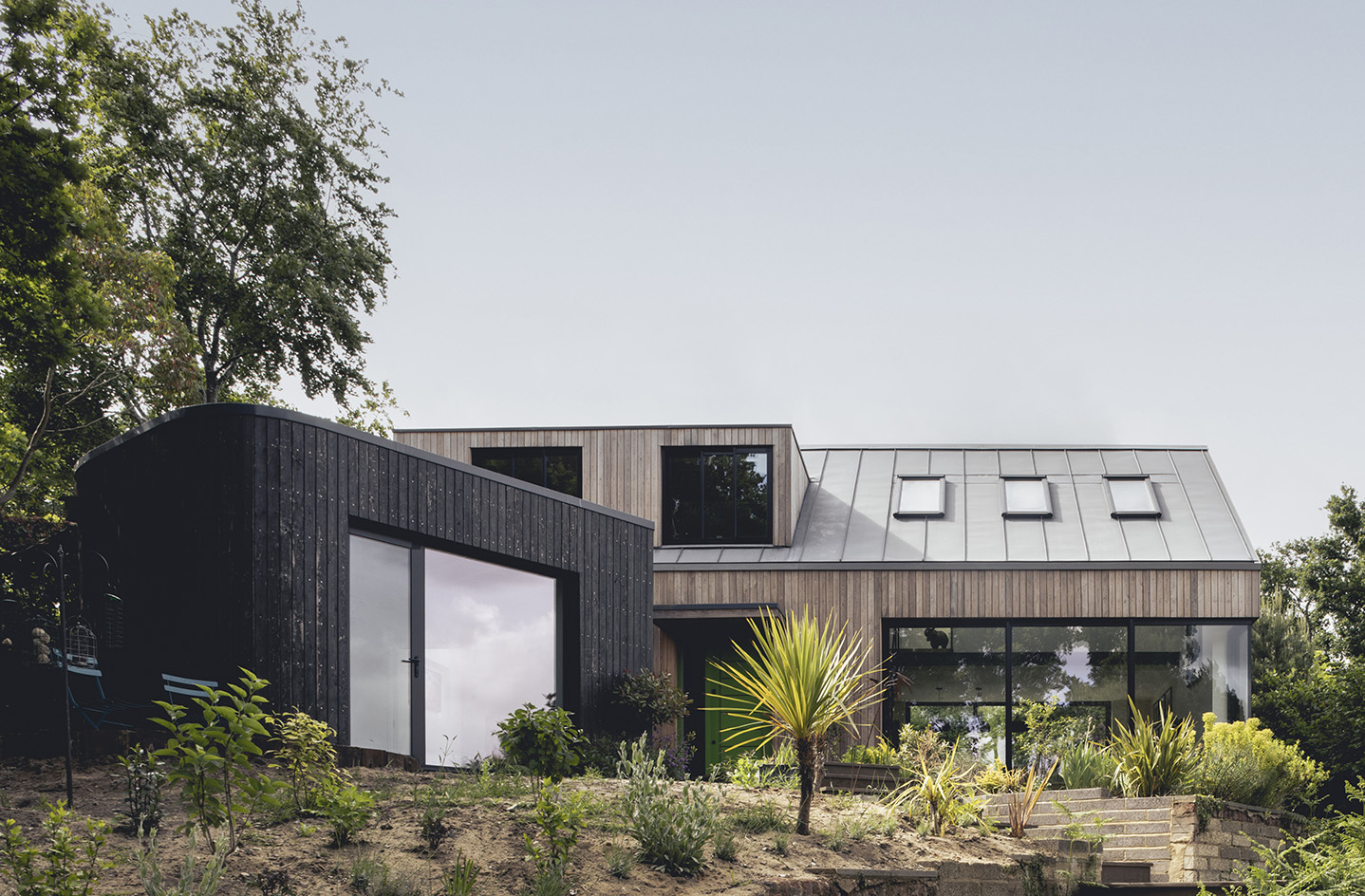
Designing a sustainable Farnham house
Sketch Architects were enlisted to design the home's sustainable architecture that would relate well to its verdant setting and be finished in natural materials. Built on a sloping site, the two-storey house now features an array of solar panels that assist in running an air-source heat pump. The panels provide electricity to the entire building with any surplus energy stored in the onsite battery. The highly insulated building envelope was designed to ensure an increased level of air-tightness – a mechanical ventilation and heat recovery system (MVHR) helps renew the air within the property and recycles the heat produced to keep temperatures in this all-electric home comfortable.
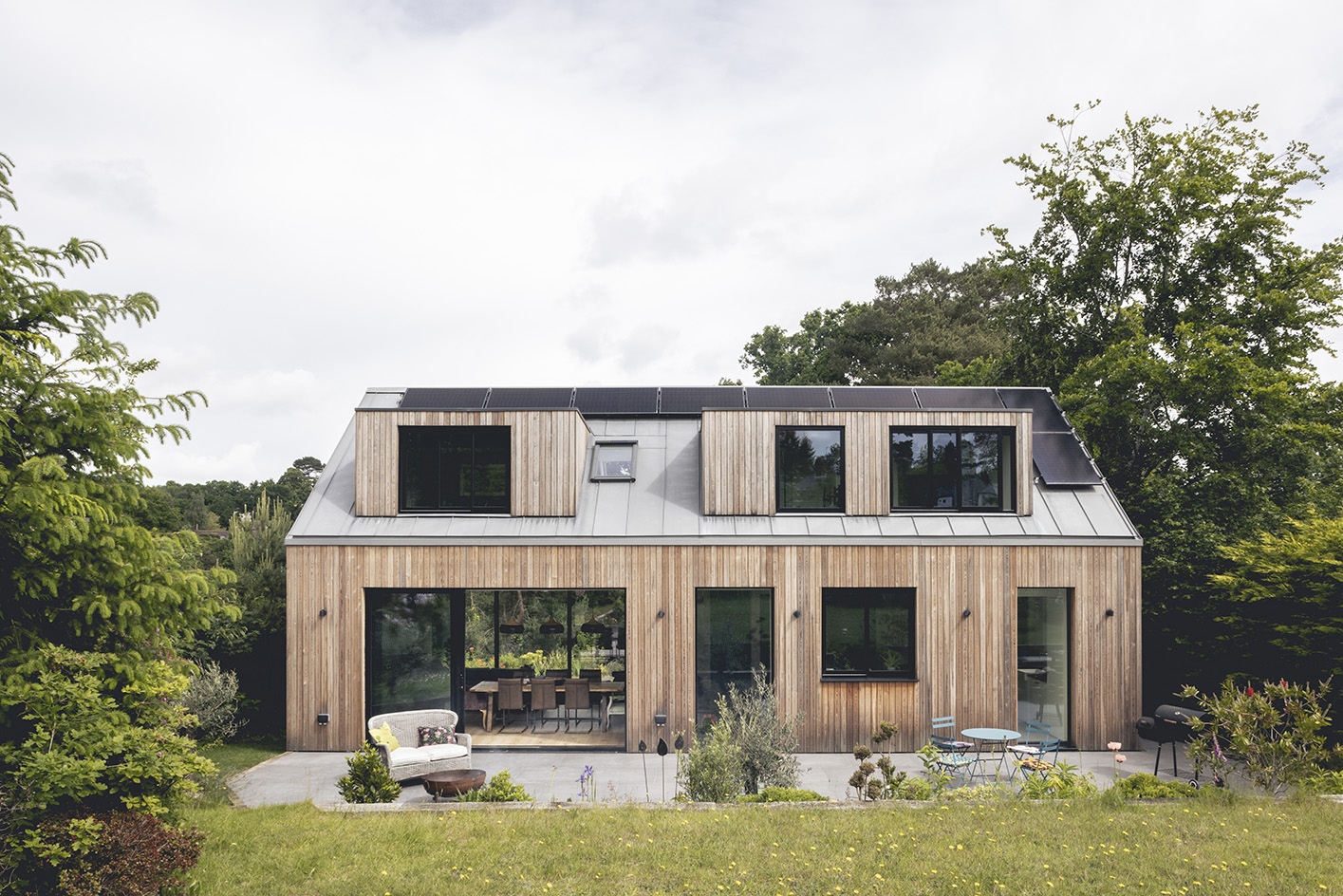
The sloping site has been exploited to give the occupants 360-degree views from all angles and allows the house to take on a traditional format with the communal spaces arranged over the ground floor of the building. The positioning of glazing and interior furnishings have been calculated in response to the elevated views of the Surrey countryside. Within the open-plan layout is a kitchen, dining and living area. This zone is delineated by a bespoke steel and timber staircase, which rises up through a double-height space above the living area. Rather than mask the supporting steel beam and column, it is instead highlighted in a moss green.
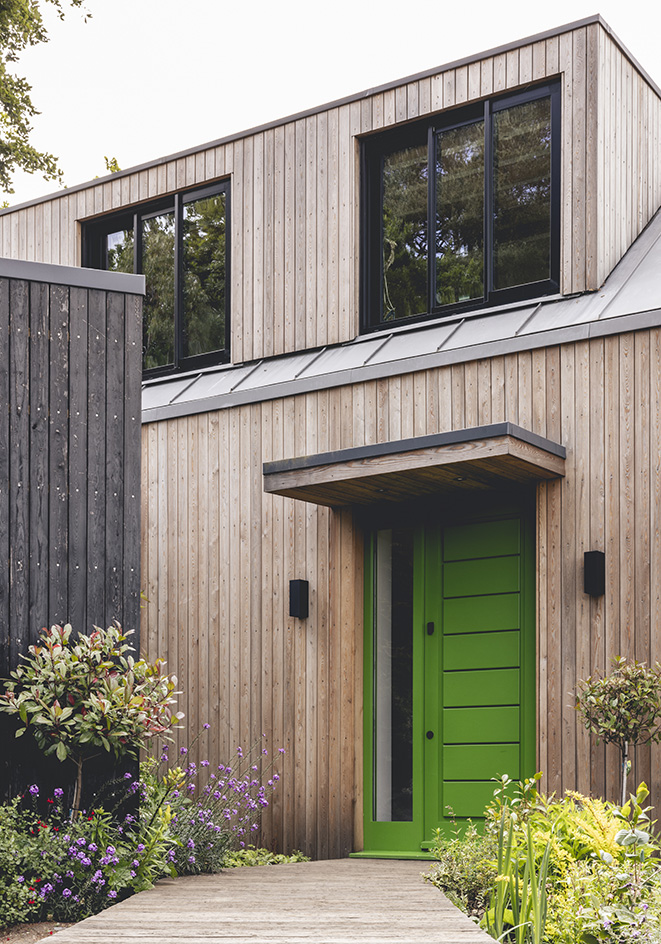
A pod studio that can be transformed into a guest bedroom with a utility space and bathroom help future-proof the home, should accessibility become an issue in the future. The pod structure is connected by a glass link and clad in charred timber. It features a sedum roof, which contrasts with the natural larch façade and zinc standing seam of the main building. Upstairs, four bedrooms fan off the gallery landing, one of which is a master suite. The rooms celebrate the use of glulam beams, which are left exposed to add a layer of detail and texture.
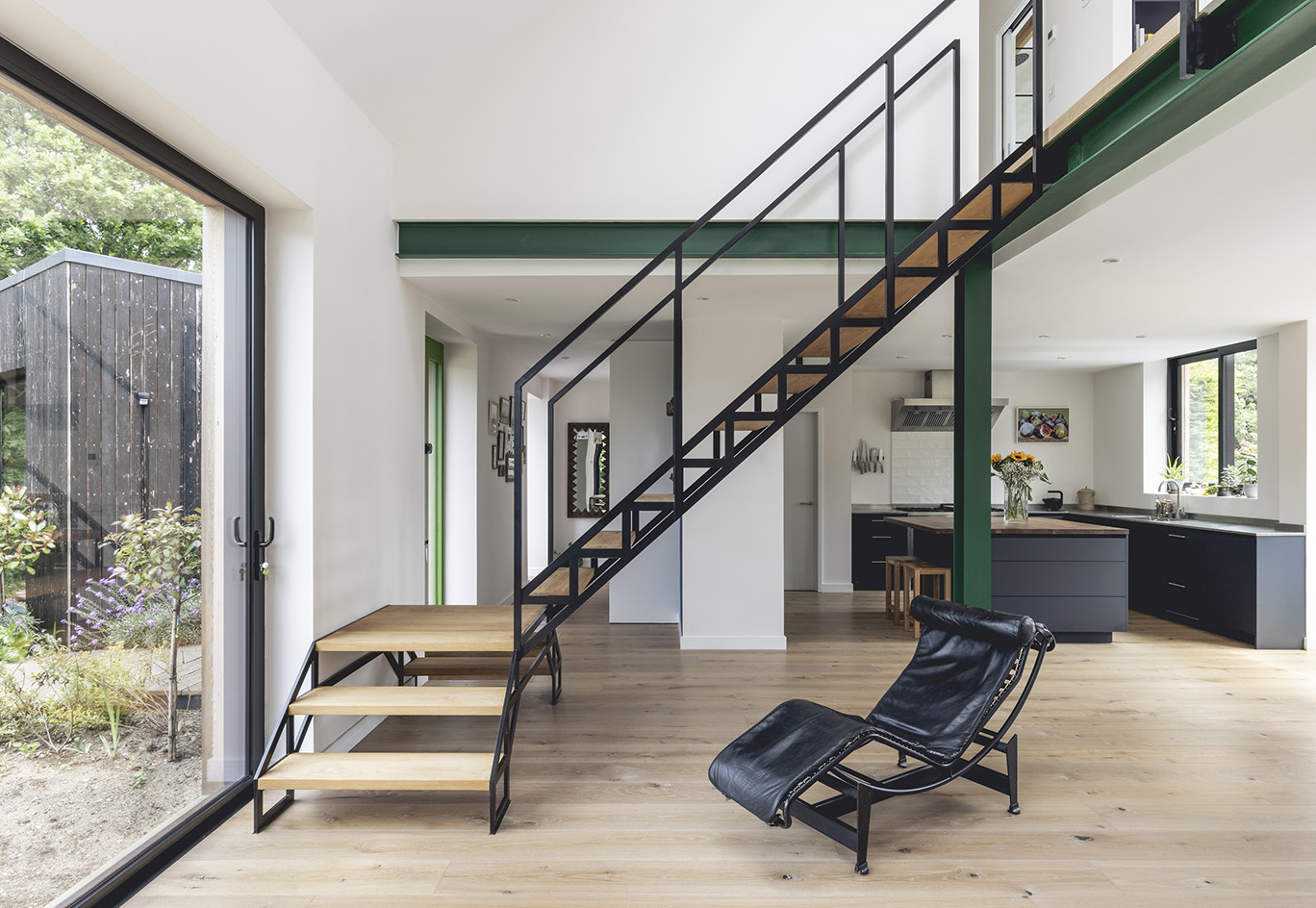
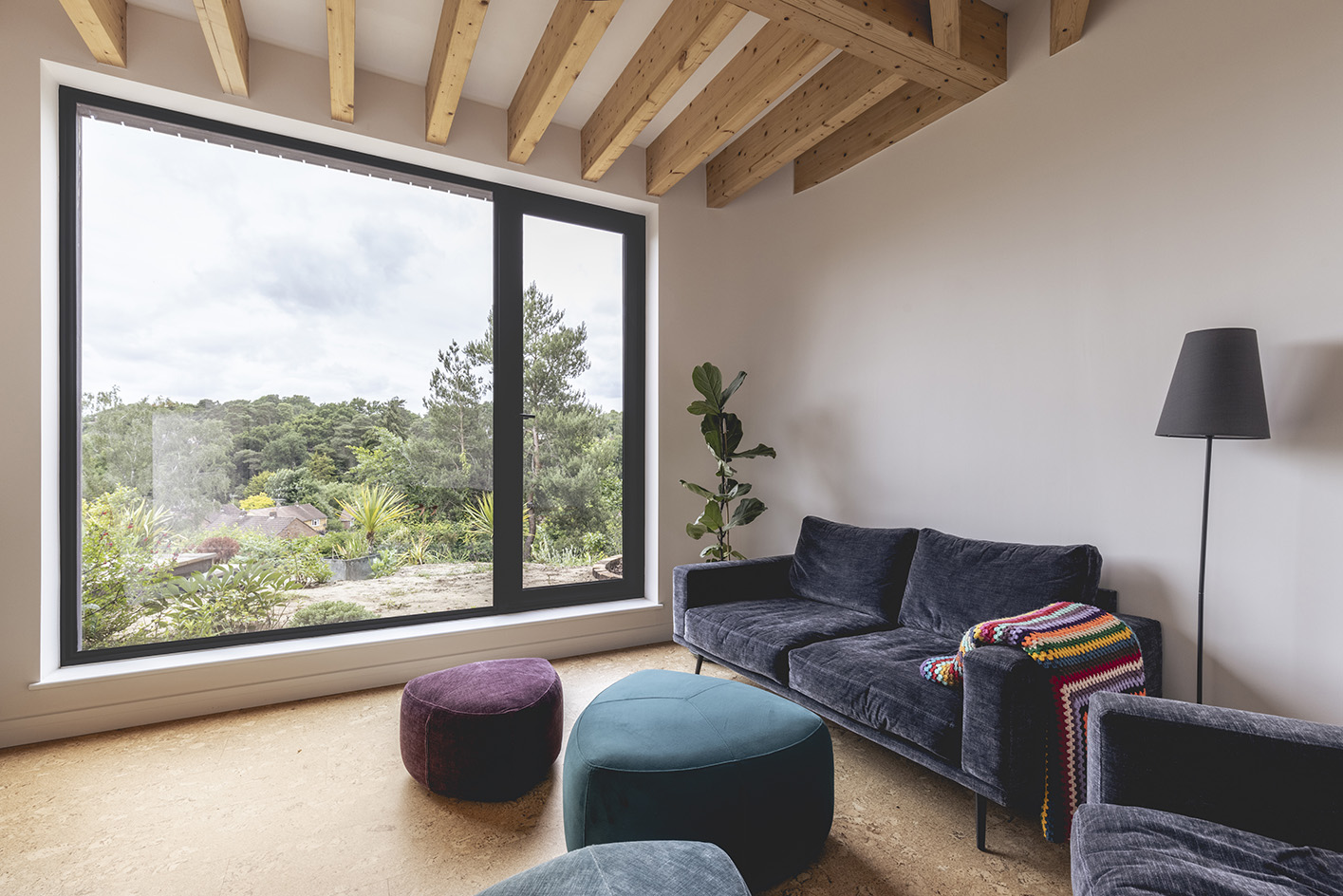
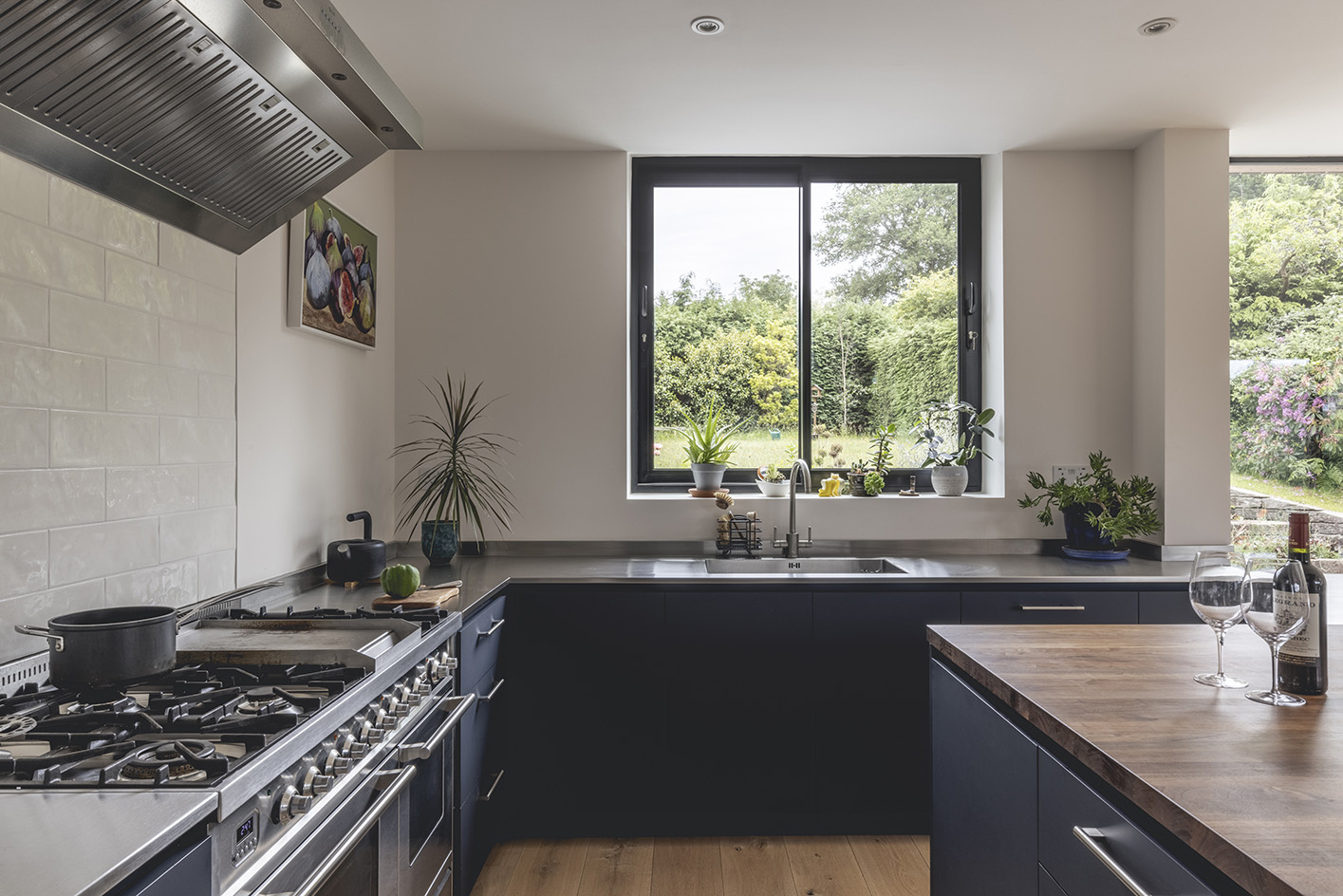
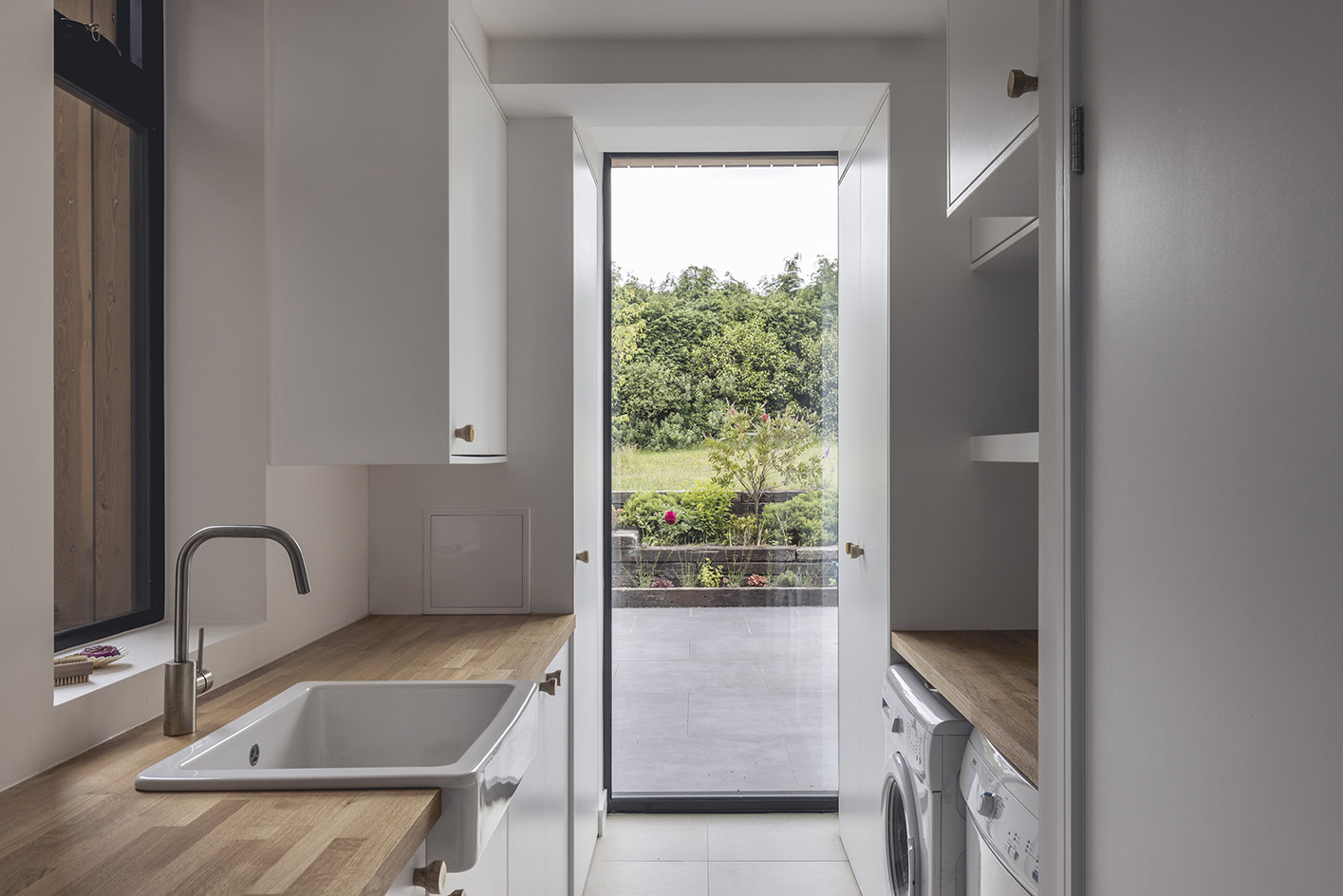
Receive our daily digest of inspiration, escapism and design stories from around the world direct to your inbox.
-
 Sculptor Woody De Othello paints a Miami museum red for a show that ‘almost hugs you’
Sculptor Woody De Othello paints a Miami museum red for a show that ‘almost hugs you’The Miami-born, California-based artist opens his first museum exhibition in his hometown as an experiential journey through life and lifeless objects
-
 Alpine A390 GT: French, fast and fun. A sporting EV with a real sense of occasion
Alpine A390 GT: French, fast and fun. A sporting EV with a real sense of occasionAlpine doubles down on its fast electric credentials with the A390 GT, the French performance brand’s largest car to date
-
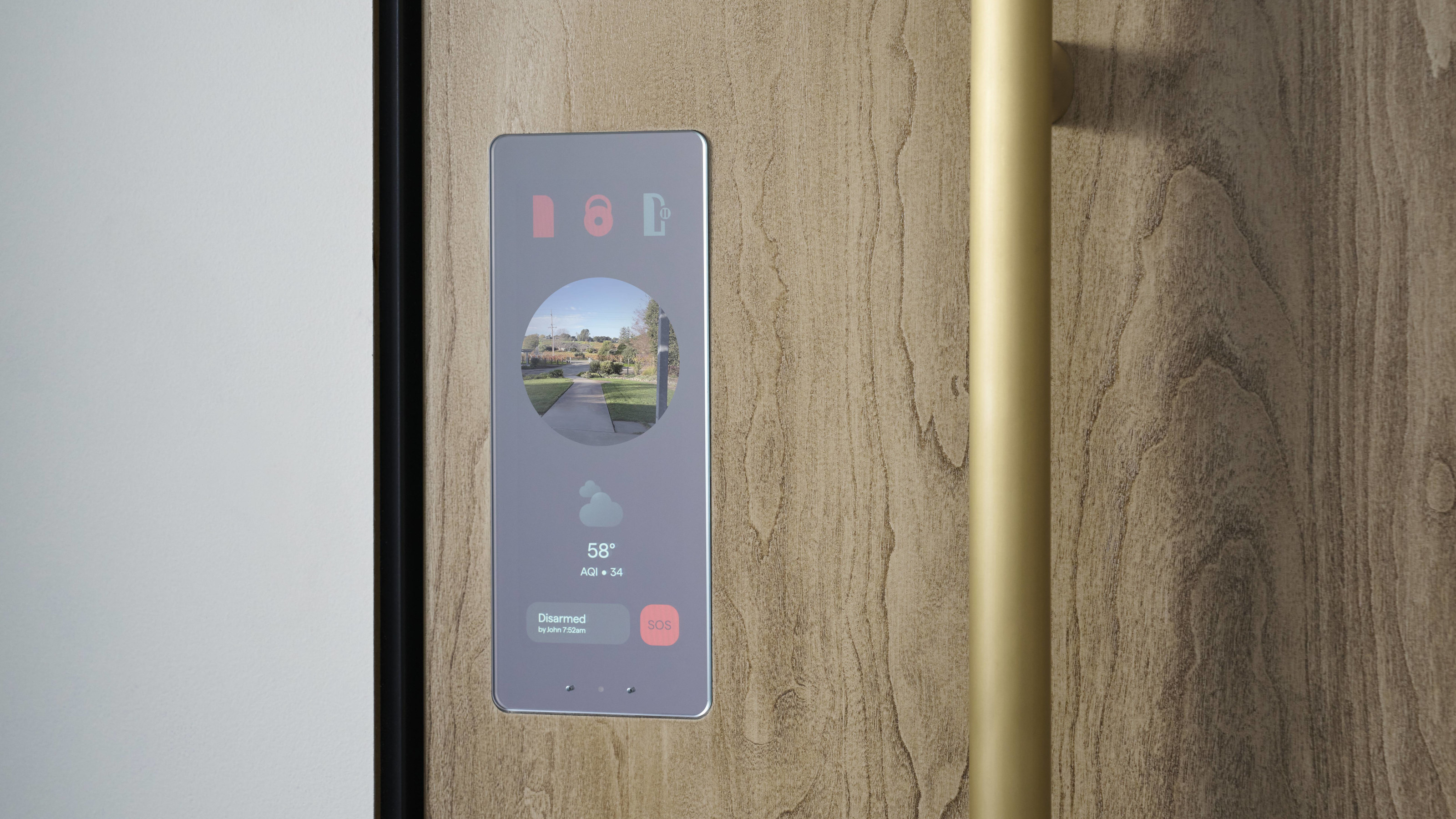 Forget smart homes, Doma's 'intelligent' doors open at the sight of a familiar face
Forget smart homes, Doma's 'intelligent' doors open at the sight of a familiar faceYves Béhar and Jason Johnson have founded Doma, a tech start-up dedicated to seamlessly integrating tech into your daily life
-
 Arbour House is a north London home that lies low but punches high
Arbour House is a north London home that lies low but punches highArbour House by Andrei Saltykov is a low-lying Crouch End home with a striking roof structure that sets it apart
-
 A former agricultural building is transformed into a minimal rural home by Bindloss Dawes
A former agricultural building is transformed into a minimal rural home by Bindloss DawesZero-carbon design meets adaptive re-use in the Tractor Shed, a stripped-back house in a country village by Somerset architects Bindloss Dawes
-
 RIBA House of the Year 2025 is a ‘rare mixture of sensitivity and boldness’
RIBA House of the Year 2025 is a ‘rare mixture of sensitivity and boldness’Topping the list of seven shortlisted homes, Izat Arundell’s Hebridean self-build – named Caochan na Creige – is announced as the RIBA House of the Year 2025
-
 In addition to brutalist buildings, Alison Smithson designed some of the most creative Christmas cards we've seen
In addition to brutalist buildings, Alison Smithson designed some of the most creative Christmas cards we've seenThe architect’s collection of season’s greetings is on show at the Roca London Gallery, just in time for the holidays
-
 In South Wales, a remote coastal farmhouse flaunts its modern revamp, primed for hosting
In South Wales, a remote coastal farmhouse flaunts its modern revamp, primed for hostingA farmhouse perched on the Gower Peninsula, Delfyd Farm reveals its ground-floor refresh by architecture studio Rural Office, which created a cosy home with breathtaking views
-
 A revived public space in Aberdeen is named Scotland’s building of the year
A revived public space in Aberdeen is named Scotland’s building of the yearAberdeen's Union Terrace Gardens by Stallan-Brand Architecture + Design and LDA Design wins the 2025 Andrew Doolan Best Building in Scotland Award
-
 A refreshed 1950s apartment in East London allows for moments of discovery
A refreshed 1950s apartment in East London allows for moments of discoveryWith this 1950s apartment redesign, London-based architects Studio Naama wanted to create a residence which reflects the fun and individual nature of the clients
-
 In this Cotswolds home, drama meets minimalism
In this Cotswolds home, drama meets minimalismCotswolds home Hiaven house, with interiors designed by McLaren Excell, is a perfect blend of contemporary chic and calm, countryside drama